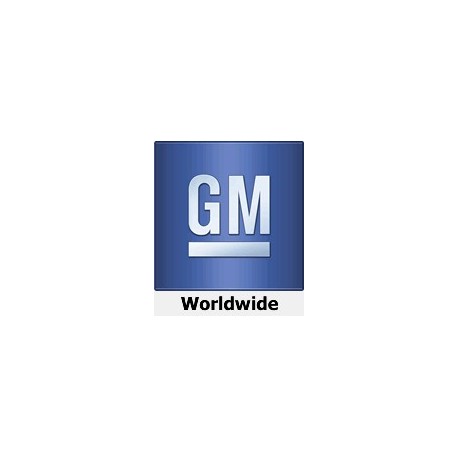No products
 View larger
View larger GMW15605
M00010348
New product
GMW15605 3rd Edition, October 2019 Fuel Filler Hose for Diesel and Biodiesel Fuels
In stock
More info
Description / Abstract: GMW15605, 3rd Edition, October 2019 - Fuel Filler Hose for Diesel and Biodiesel Fuels
Material Description.
This standard covers the material requirements of fuel filler and fuel filler vent hoses (coupled or uncoupled), for use with diesel fuel in automotive fuel systems.
Note: Hoses with Butadiene-Acrylonitrile Copolymer (NBR) lining are not to be used for diesel applications containing biodiesel.
Note: Fuel filler hoses for gasoline applications are specified in GMW15349.
For use in non-conductive environments, all layers of the hose must be non-conductive, and the requirement for non-conductivity must be noted on the part print. For those hoses that need to be conductive, the hoses must meet the conductivity requirements of this specification. MATSPC approval entries for non-conductive hoses must note the non-conductivity of the hose in the approval entry.
The material content of the hose and stiffness of the hose are defined by the Construction and Reinforcement designations for the hose. The Construction and Reinforcement designations for the hose together define the “Type” for the hose. Hoses are suitable for applications subjected to maximum continuous operation temperatures of 100 °C with intermittent operation at temperatures up to 125 °C maximum, with the exception of Construction 4 when used with Biodiesel A which has maximum continuous and excursion temperature limits of 80 °C and 100 °C, respectively.
Construction.
Materials covered by this standard are divided into several sets of constructions, reinforcement and fluid compatibility categories. The hose is defined as “GMW15605 Type XYZ,” where “X” refers to the reinforcement of the hose, “Y” refers to the construction type of the hose, and “Z” refers to the biodiesel fuel for which the hose has been determined to be compatible.
Reinforcement:
The reinforcement of the hose describes the type of fiber used in the hose. Reinforcement to the tube of the hose may be applied by braiding, knitting or circular weaving. The reinforcement, for Reinforcements A and B, is placed between the laminated tube and the cover of the hose.
Reinforcement A:
This reinforcement type consists of aramid fiber.
Reinforcement B:
This reinforcement type consists of rayon fiber.
Reinforcement C:
This reinforcement type consists of no fiber or other material added to the hose constructions described in 1.1.1.2.
Construction:
The “Construction Type” of hose defines the material content and construction of the hose. The following materials are used in the various constructions:
• Tetrafluoroethylene Hexafluoropropylene (THV)
• Epichlorohydrin/ethylene Oxide (ECO) Copolymer
• Fluoroelastomer (FKM)
• Hydrogenated Butadiene-Acrylonitrile Copolymer (HNBR)
• Chlorinated Polyethylene (CM)
• Chlorosulfonated Polyethylene (CSM)
• Polyvinylchloride Copolymer (PVC)
• Fluorocarbon Thermoplastic Vulcanizate (FTPV)
• Ethylene Tetrafluoroethylene (ETFE)
The thickness of the barrier layer shall be sufficient to ensure resistance to biodiesel fuels.
Intermediate layers within the described hose construction may be needed dependent on the hose construction.
The descriptions of the constructions of the hose are summarized in Appendix A, Table A1, together with the suffix codes used to describe each type of reinforcement used, hose construction, and biodiesel fuel compatibility.
The descriptions of the constructions of hose used for this application are as follows:
Construction Type 1:
This hose shall consist of a smooth bore tube of laminated construction consisting of an inner tube of THV, intermediate layer (if necessary) and cover to meet the temperature requirements. The minimum thickness of the barrier (THV) shall be 0.17 mm. Hose can be reinforced, see respective types (1.1.1.1).
Construction Type 2:
This hose shall consist of a smooth bore tube of laminated construction consisting of an inner tube of Fluoroelastomer (FKM), intermediate layer (if necessary) and cover to meet the temperature requirements. The minimum thickness of the FKM shall be 0.60 mm. Hose can be reinforced, see respective types (1.1.1.1).
Construction Type 3:
This hose shall consist of a smooth bore tube of laminated construction consisting of an inner tube of FTPV, intermediate layer (if necessary) and cover to meet the temperature requirements. The minimum thickness of the barrier (FTPV) shall be 0.17 mm. Hose can be reinforced, see respective types (1.1.1.1).
Construction Type 4:
This hose shall consist of a smooth bore tube of laminated construction consisting of an inner tube of HNBR, intermediate layer (if necessary) and cover to meet the temperature requirements. The minimum thickness of the barrier (HNBR) shall be 0.60 mm. Hose can be reinforced, see respective types (1.1.1.1).
Construction Type 5:
This hose shall consist of a smooth bore tube of ETFE, intermediate layer (if necessary) and cover to meet the temperature requirements. The minimum thickness of the barrier (ETFE) shall be 0.17 mm
Construction Type 6:
This hose shall consist of a smooth bore laminated tube of FTPV and ETFE, with an intermediate layer of CM, and a cover of CM. The minimum thickness of the barrier (FTPV/ETFE) shall be 0.18 mm. Hose can be reinforced, see respective types (1.1.1.1).
Biodiesel Fuel Compatibility:
The hose is placed into one (1) of two (2) categories defining the hose compatibility with two (2) standard biodiesel fuels. Biodiesel fuels contained herein are Rapeseed Methyl Ester (RME)-based and Soybean Methyl Ester (SME)-based.
Biodiesel Fuel A Compatible.
This hose is considered compatible with fuel consisting of 20% or more of biodiesel content and containing SME-based biodiesel and is also considered compatible with biodiesel consisting of 10% or less of biodiesel content and containing ˂ 2% of SME-based biodiesel.
Biodiesel Fuel B Compatible.
This hose is only considered compatible with fuel consisting of 10% or less of biodiesel content and containing 2% of SME-based biodiesel. 1.2 Symbols. Not applicable.
Symbols.
Not applicable.
Applicability.
This standard covers the material requirements of fuel filler and fuel filler vent hoses (coupled or uncoupled), for use with diesel fuel in automotive fuel systems.
Remarks.
Not applicable.

